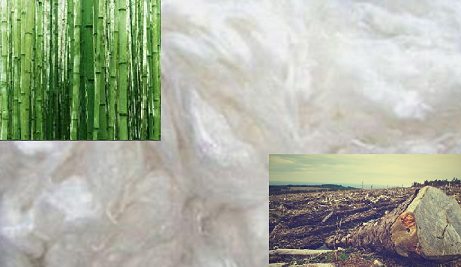 When it comes to viscose fiber, where the raw materials come from goes a long way in determining its environmental impact.
When it comes to viscose fiber, where the raw materials come from goes a long way in determining its environmental impact.
That’s according to a recent Life Cycle Assessment (LCA) study completed by SCS Global Services on behalf of Stella McCartney, focusing on the production of viscose fiber.
Tobias Schultz, director of research and development at SCS, who headed up the certification team for the LCA study, wrote in a blog post revealing some of the key learnings, including the fact that there are distinct impacts of different manmade cellulosic fibers (MMCF).
Schultz said apparel companies are keenly interested in identifying environmentally preferable fibers for use in the manufacture of clothing, but little research had been conducted on viscose—also known as rayon—compared to materials such as cotton or polyester.
In the study, conventional viscose produced from wood was compared with innovative new technologies like flax-based fiber substitutes. The study broke new ground by including an evaluation of impacts on terrestrial and freshwater ecosystems in the forests and farms of origin.
Manmade cellulosic fibers from different sources may be functionally and chemically identical, but can have radically different environmental profiles based on the processes and technologies used in production, according to Tobias. For example, manmade cellulosics from tropical hardwoods originating in Indonesia had significant negative impacts associated with deforestation of the rainforest, which were completely different from MMCF originating from well-managed forests in Sweden.
“There’s no home run when it comes to selecting environmentally preferable fibers,” he said. “All sources of MMCF had trade-offs, although some performed better overall than others.”While none of the 10 sourcing scenarios were environmentally preferable across all impact categories, MMCF made from Belgian flax or recycled clothing emerged as favorable across a majority of impact categories. Overall, these two innovative technologies were the most favorable sources identified in the LCA, he noted.
Asian production from Canadian boreal forest pulp, Chinese production from Indonesian rainforest pulp, Chinese production from Indonesian plantation pulp, and Indian cotton linter pulped in China had the heaviest environmental footprints among the scenarios examined.
This cradle-to-gate LCA considered a complete set of environmental performance factors related to the production of MMCF, including all impacts arising from the time raw materials are obtained from forests, agricultural operations or other sources, through the production of MMCFs.
In completing the study, Tobias said the latest science and data were applied, conforming to the internationally recognized standards and the Roundwood Product Category Rule (PCR). The report was then peer-reviewed by representatives from Price Waterhouse Cooper, the Smithsonian Tropical Research Institute, the Copernicus Institute of Sustainable Development at Utrecht University, and the environmental not-for-profit organization Canopy. This level of scrutiny ensured the report’s findings were robust and reliable, he said.
The study should serve as a key resource for the apparel industry, as it provides insights into the wide range of impacts that a brand’s or supplier’s choice of MMCF fiber source can have, including impacts on species, forest ecosystems, freshwater, global climate and human health.
Related Topics
